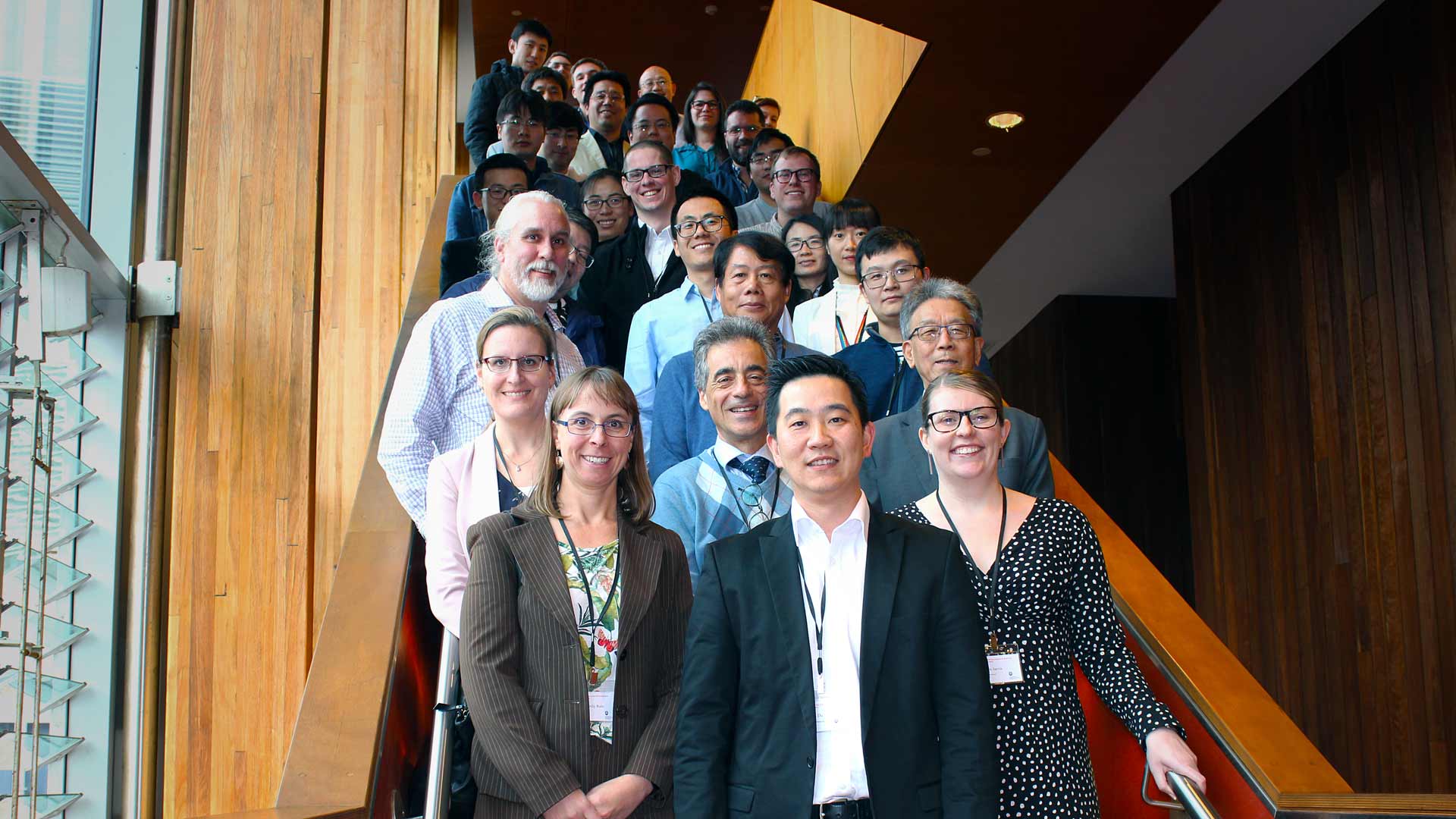June 24, 2019
Workshop dives beneath the surface of materials science
Australian scientists gather at UOW to progress research and development of surface science for next-generation technology.
A group of law-defying academics gathered at UOW this week with a single intent: to double down on their edge of the envelope ways.
The laws here though are those of physics and chemistry, that underpin most of the technology we use in electronic devices – from quantum computer chips and data storage devices.
To create new technology, such as quantum computers or mega data storage, requires a healthy scepticism of the rule book as researchers look for new types of materials and new ways to fabricate them to increase electronic performance and solve long-standing challenges.
UOW’s Institute for Superconducting and Electronic Materials (ISEM), housed at the Australian Institute for Innovative Materials (AIIM), hosted a two-day workshop where the leading minds in Australia gathered to discuss advances and opportunities in materials science.
Over two days leading researchers from Australian universities and research organisations working in materials science, physics, chemistry, photonics and biology attended the ‘Workshop on Surface Science and Technology’ for lively discussion in a stimulating and interactive atmosphere.
The workshop also provided a platform for engaging future collaborations in surface science and technology.
Among the topics and work presented were new quantum materials for low-energy quantum electronics. Many current electronic technologies are limited in their applications due to cost production or performance limits of the materials.
Yet new materials that overcome current limitations would be a game changer for the integration of large-scale super-performance electronics to emerging quantum computers and devices.
On an atomic level, researches discussed new developments in single-atom construction of matter for quantum computing.
Other work focused on modifying surfaces to better interact with biological materials without rejection or propagating bacteria for use in medical devices and implantable surgical aids for treating disease and or trauma.
In addition to theoretical or experimental work, a critical part of the discussion was commercial translation of research to enable the fabrication of new materials and new devices on an industrial scale.
Workshop Chair Associate Professor Yi Du said the talks were an exciting forum that reflected the top-level surface-science research in Australia.
“These workshops are an invaluable opportunity to exchange ideas and seek broad collaborations as we look for ways to solve fundamental challenges that will enable a new generation of electronic devices that are more efficient, smarter and more compatible with our lives.
“All of these new devices will require not only revolutionary materials to laws of physics and chemistry, but new ways to make those materials that is also cost effective and scalable.
“To do that we need leading researchers exchanging ideas and working together.”
ISEM is a global leader in research that includes batteries for electric vehicles and energy storage; applied superconductivity for electrical and medical devices; energy conversion and transmission; spintronic and electronic materials for applications; terahertz science; and nano-structured materials.
It is one of the few multifunctional materials facilities that has the capacity to develop the processes and devices needed to scale-up lab-based breakthroughs in preparation for commercialisation.
